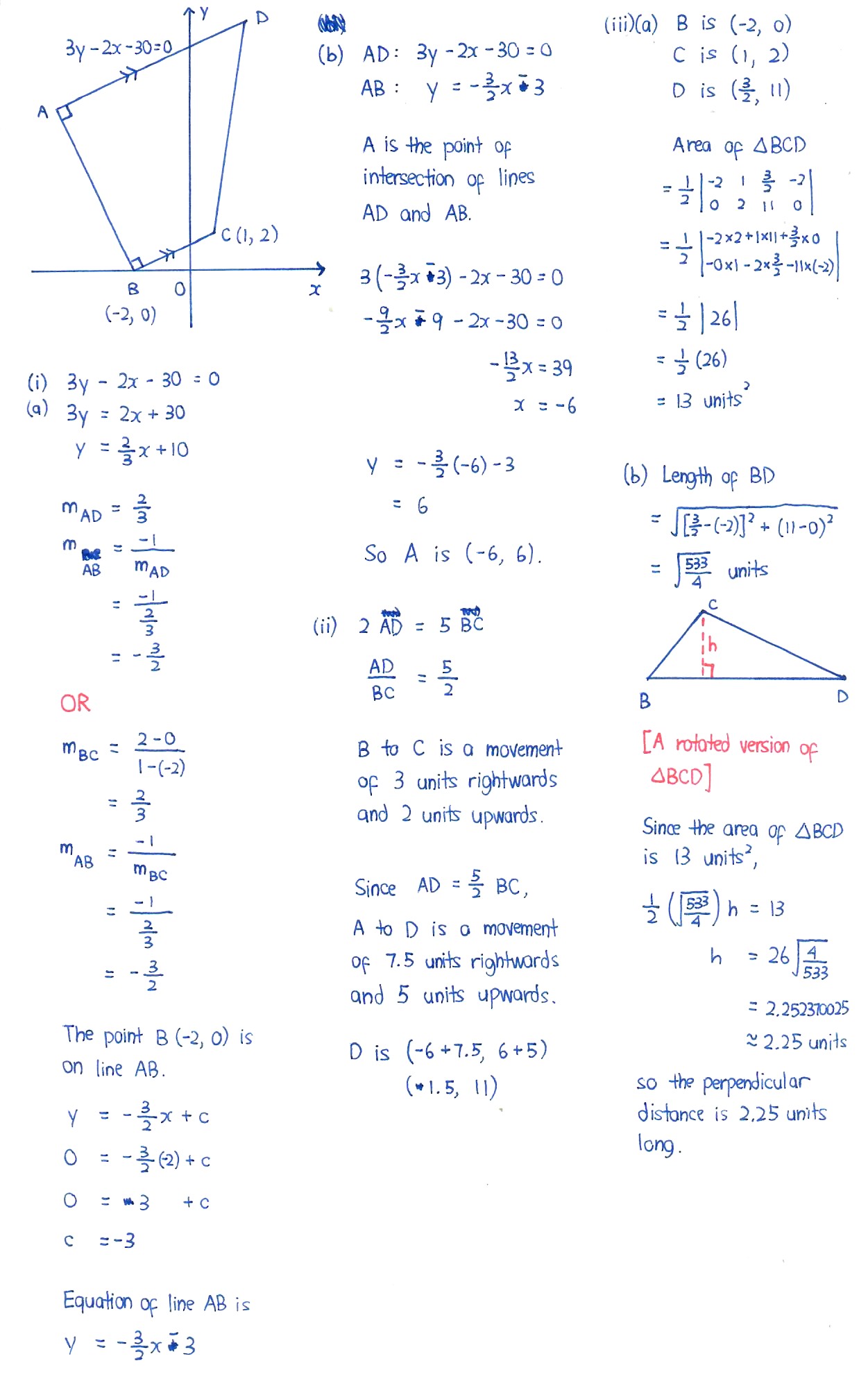Ask Singapore Homework?
Upload a photo of a Singapore homework and someone will email you the solution for free.

Question
secondary 4 | A Maths
One Answer Below
Anyone can contribute an answer, even non-tutors.

please help for part ii thankyou!
= √( (-2 - 1)² + (0 - 2)² )
= √13 units
Since 2AD = 5BC,
AD = 5/2 BC = 5/2 √13 units
Let the coordinates of D be (a,b)
AD also = √((-6 - a)² + (6 - b)²)
So 5/2 √13 = √((-6 - a)² + (6 - b)²)
(5/2 √13)² = (-6 - a)² + (6 - b)²
25/4 x 13 = 36 + 12a + a² + 36 -12b + b²
81¼ = 72 + 12a + a² - 12b + b²
9¼ = 12a + a² - 12b + b²
3y - 2x - 30 = 0
So 2x = 3y - 30
x = 3/2y - 15
Since D lies on the line, its coordinates satisfies the equation. So a = 3/2b - 15
So 9¼ = 12(3/2b - 15) + (3/2b - 15)² - 12b + b²
9¼ = 18b - 180 + 9/4 b² - 45b + 225 - 12b + b²
13/4 b² - 39b + 35¾ = 0
b² - 12b + 11 = 0
(b - 11)(b - 1) = 0
b = 11 or b = 1(rejected, as b should be greater than 6 since its higher up along the y axis than A)
so b = 11
a = (3/2 x 11) - 15
a = 1.5
So D(1.5,11) (shown)
Say ABCD is a square and A to B is 5 units rightwards and 1 unit upwards.
B to C will be 1 unit rightwards and 5 units downwards.
It’s much harder in this case.
For all other cases, there is no other choice but to use the long algebra way.
See 1 Answer
iii a)
Alternative working for area of BCD :
Area = ½ x base x height
= ½ x BC x AB
(AB is the perpendicular height)
= ½ x √( (-2 - 1)² + (0 - 2)² ) x √( (-2 - (-6) )² + (0 - 6)²)
= ½ x √13 x √52
= 13
You can draw two vertical lines, one from C and one from D, to hit the x-axis at P and Q, then draw a straight line BD, then evaluate
Area of BDQ - Area of BCP - Area of CPQD
using only horizontal lengths and vertical heights parallel to the coordinate axes.





